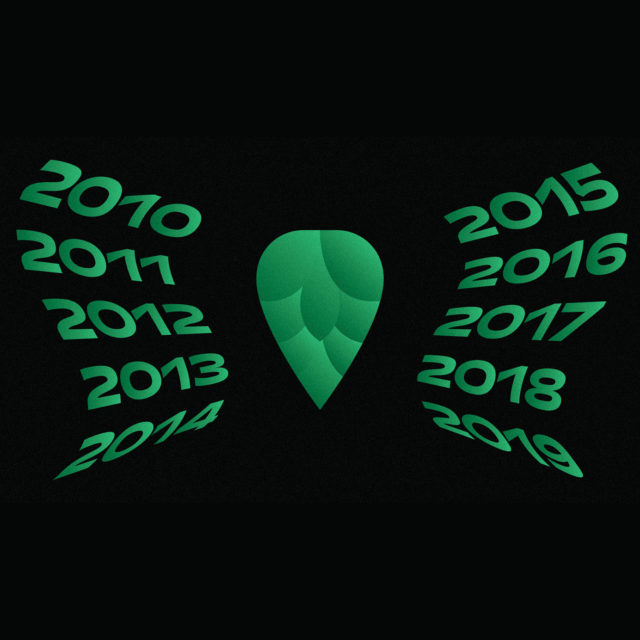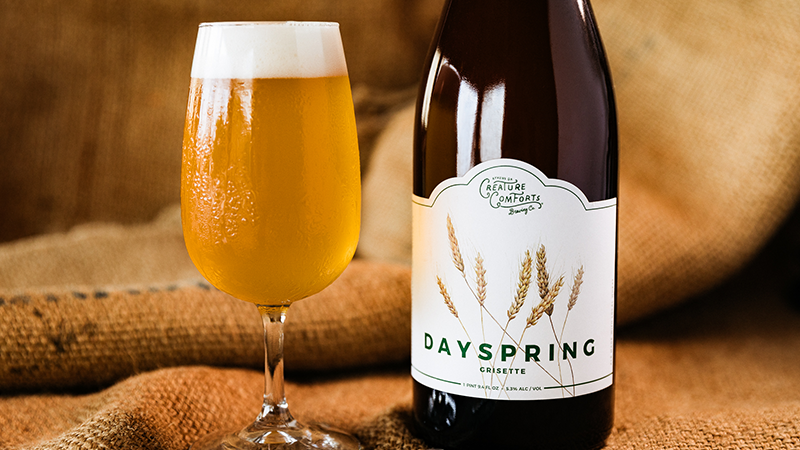Beer runs on a different timeline than other beverages. In wine years, a decade is a fraction of a family-owned vineyard’s story. The same period is barely enough time to age a decent bourbon. But in the last 10 years, beer — craft beer, especially — has undergone seismic shifts.
A once-singularly flavored fizzy beverage became a movement. The product itself aimed for more: more flavor, more experimentation, and more community-minded business practices. It also became more than a beverage, as craft beer drinkers rallied around beer as a moral and political choice.
Since 2010, beer has quenched our thirst and become part of our personal identities. And like all of us, it’s constantly changing. The beginning of the decade brought us Hill Farmstead Brewery, Tired Hands, and Tree House, and with them came the advent of the New England-style IPA. We’ve seen the return of centuries-old forgotten styles like gose and gruit, and brewers tirade against, then excessively embrace, adjuncts in the form of milkshake IPAs and pastry stouts.
In 2010, there were 1,759 breweries operating in the U.S. “Beer lovers increased their appreciation for American craft brewers and their beers in 2010,” Paul Gatza of the Brewers Association said in a press release at the time. “Craft brewers’ stories resonate with Americans who are choosing small, independent companies making delicious beers in more than 100 different styles.”
There are nearly 7,500 breweries operating in the U.S. today. Of course, not all of them can change the course of craft beer history. For that, we tip our hats to the breweries below: the 35 most important breweries of the decade.
Sierra Nevada Brewing
Chico, Calif.
Est. 1980
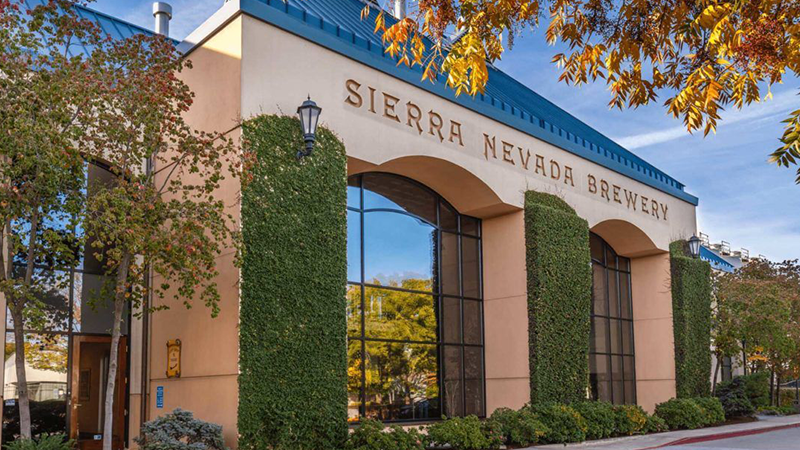 It’s hard to believe Sierra Nevada was around long before many craft beer fans were born. Sierra Nevada pioneered hop-forward ales with its flagship Sierra Nevada Pale Ale, and with the invention of an enviable dry-hopping mechanism called the Hop Torpedo that many other brewers have envied and copied. In 2014, Sierra Nevada opened an East Coast facility in Mills River, N.C., near Asheville, signaling to similar brands that East Coast drinkers deserved better, fresher beer. In 2016, that location became the first Leadership in Energy and Environmental Design (LEED) Platinum status-certified production brewery in the U.S., showing Sierra Nevada’s sustainability leadership, too. This legacy brand continues to innovate with beers like Hazy Little Thing IPA, ranked by VinePair as the best beer of 2018.
It’s hard to believe Sierra Nevada was around long before many craft beer fans were born. Sierra Nevada pioneered hop-forward ales with its flagship Sierra Nevada Pale Ale, and with the invention of an enviable dry-hopping mechanism called the Hop Torpedo that many other brewers have envied and copied. In 2014, Sierra Nevada opened an East Coast facility in Mills River, N.C., near Asheville, signaling to similar brands that East Coast drinkers deserved better, fresher beer. In 2016, that location became the first Leadership in Energy and Environmental Design (LEED) Platinum status-certified production brewery in the U.S., showing Sierra Nevada’s sustainability leadership, too. This legacy brand continues to innovate with beers like Hazy Little Thing IPA, ranked by VinePair as the best beer of 2018.
Bell’s Brewery
Comstock, Mich.
Est. 1985
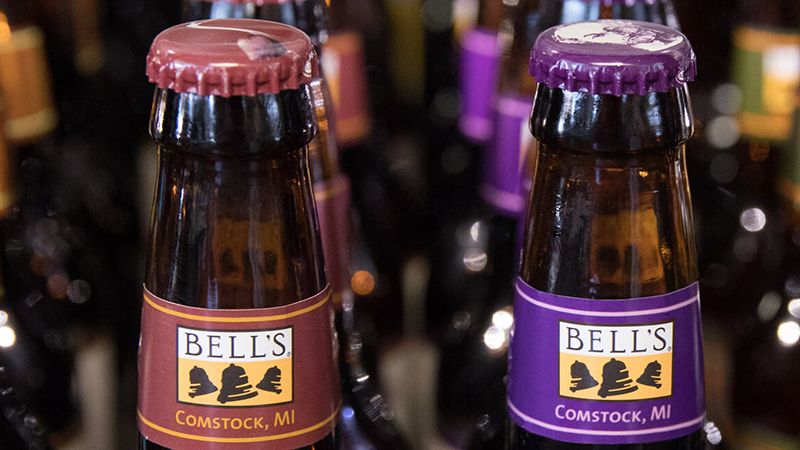 The same year Coca-Cola introduced New Coke and CDs were invented, Bell’s Brewery opened its doors in Kalamazoo, Mich. Along with being one of few breweries to make a sought-after brown ale, Bell’s has an almost mystical ability to stay on top. While millennial beer geeks wade through countless lactose-laden hazy IPAs, Bell’s Brewery’s Two Hearted Ale (“ale!” — it wasn’t even called an IPA!) continues to dominate more experienced beer lovers’ lists. In 2019, the American Homebrewers Association (AHA) ranked Two Hearted Ale the No. 1 beer in the country for a third consecutive year. Bell’s Brewery’s Hopslam Ale (again, “ale!”) placed seventh, and Bell’s Brewery as a whole was named the best brewery.
The same year Coca-Cola introduced New Coke and CDs were invented, Bell’s Brewery opened its doors in Kalamazoo, Mich. Along with being one of few breweries to make a sought-after brown ale, Bell’s has an almost mystical ability to stay on top. While millennial beer geeks wade through countless lactose-laden hazy IPAs, Bell’s Brewery’s Two Hearted Ale (“ale!” — it wasn’t even called an IPA!) continues to dominate more experienced beer lovers’ lists. In 2019, the American Homebrewers Association (AHA) ranked Two Hearted Ale the No. 1 beer in the country for a third consecutive year. Bell’s Brewery’s Hopslam Ale (again, “ale!”) placed seventh, and Bell’s Brewery as a whole was named the best brewery.
Deschutes Brewery
Bend, Ore.
Est. 1988
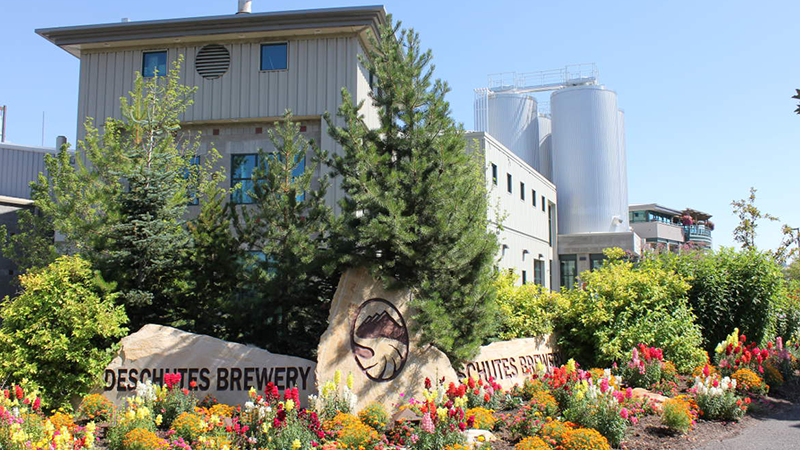 Although few people pronounce its name correctly, Deschutes (hence the 2019 beer release, Da Shootz!) is the epitome of old-school cool. Its flagship beer is a porter (Black Butte Porter). It’s majority-owned by its original founder, Gary Fish, and his family, and announced an employee stock ownership plan (ESOP) in 2013. (This means employees can gain company shares correlating to their time working with the company.) It won sustainability awards in 2015 and 2016. And, after reevaluating plans to expand to the East Coast, it’s stayed afloat in the most treacherous time for brands of its size.
Although few people pronounce its name correctly, Deschutes (hence the 2019 beer release, Da Shootz!) is the epitome of old-school cool. Its flagship beer is a porter (Black Butte Porter). It’s majority-owned by its original founder, Gary Fish, and his family, and announced an employee stock ownership plan (ESOP) in 2013. (This means employees can gain company shares correlating to their time working with the company.) It won sustainability awards in 2015 and 2016. And, after reevaluating plans to expand to the East Coast, it’s stayed afloat in the most treacherous time for brands of its size.
New Belgium Brewing
Fort Collins, Colo.
Est. 1991
Though it sold to Japan’s Kirin brewery in 2019 (and, at press time, is in the midst of a seriously disturbing controversy), New Belgium blossomed in the 2010s. Fat Tire grabbed beer drinkers’ attention in the 1990s, yet the amber ale didn’t even hint at what was to come. New Belgium went on to run one of the country’s best sour beer programs; a money-making series of Voodoo Ranger IPAs; and in 2019, it brought us Mural Agua Fresca, one of the most refreshing beers we’ve tasted to date.
Lagunitas Brewing Company
Placentia, Calif.
Est. 1993
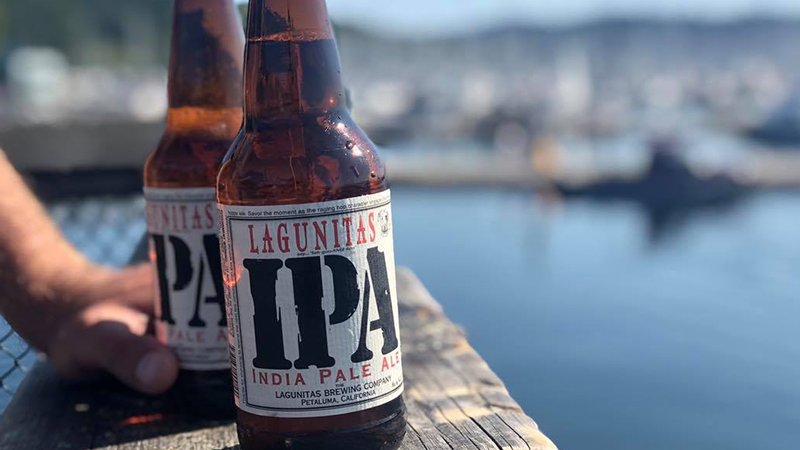 Before it sold to Heineken in 2015, Lagunitas was associated with weed culture and California love (although its founder and some of its beer originate in Chicago). Yet “sellout” or not, Lagunitas IPA is still one of the most reliable IPAs on tap across the nation. If there’s a slim list at a dive bar, chances are Lagunitas will be on it, and we’ll take it over other mass-produced IPAs any day.
Before it sold to Heineken in 2015, Lagunitas was associated with weed culture and California love (although its founder and some of its beer originate in Chicago). Yet “sellout” or not, Lagunitas IPA is still one of the most reliable IPAs on tap across the nation. If there’s a slim list at a dive bar, chances are Lagunitas will be on it, and we’ll take it over other mass-produced IPAs any day.
Left Hand Brewing
Longmont, Colo.
Est. 1993
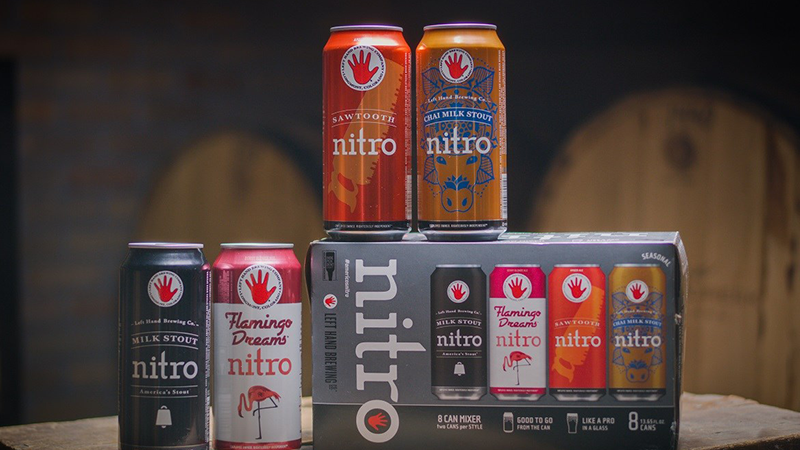 Left Hand gave us Milk Stout right before the new millennium. In 2011, it gave us the gift of Milk Stout Nitro in bottles. Then, in 2017, Milk Stout Nitro became available in cans (take that, Guinness!). Now nitro beers are everywhere, and we have Left Hand to thank for that.
Left Hand gave us Milk Stout right before the new millennium. In 2011, it gave us the gift of Milk Stout Nitro in bottles. Then, in 2017, Milk Stout Nitro became available in cans (take that, Guinness!). Now nitro beers are everywhere, and we have Left Hand to thank for that.
Avery Brewing
Boulder, Colo.
Est. 1993
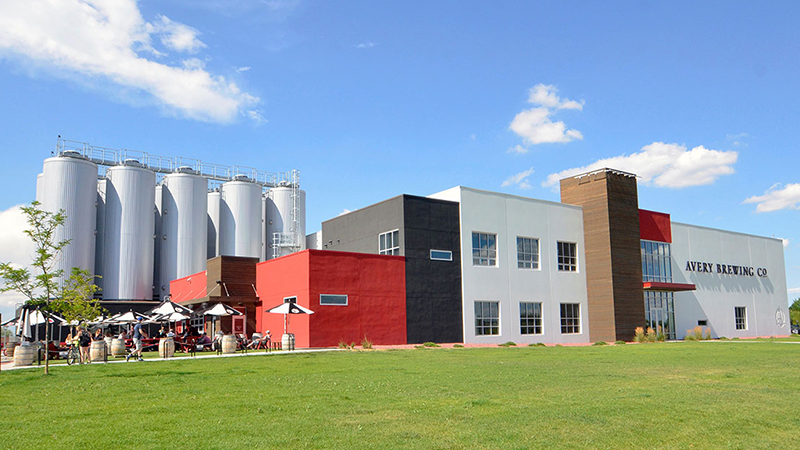 Avery is a brand that you may not realize you’re fond of until you think about the impact it’s had on your life. An early arrival to the U.S. craft brewing scene, it still makes one of the best American wheat beers, White Rascal. Its barrel-aged program occasionally wows us with labels like Bon Bon Cerise, one of our favorite barrel-aged stouts and beers of the year. It also makes concerted efforts to keep up with the times, with its on-trend Hazyish IPA and Avery Rocky Mountain Rosé.
Avery is a brand that you may not realize you’re fond of until you think about the impact it’s had on your life. An early arrival to the U.S. craft brewing scene, it still makes one of the best American wheat beers, White Rascal. Its barrel-aged program occasionally wows us with labels like Bon Bon Cerise, one of our favorite barrel-aged stouts and beers of the year. It also makes concerted efforts to keep up with the times, with its on-trend Hazyish IPA and Avery Rocky Mountain Rosé.
Allagash Brewing
Portland, Maine
Est. 1994
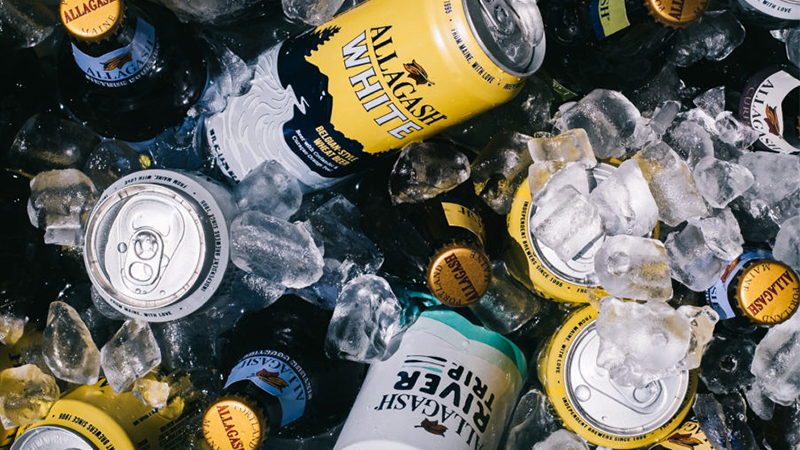 Not many breweries can claim their first beer remains their top seller 25 years later — an especially impressive feat when that beer was initially rejected. “People hadn’t seen cloudy beer like this with authentic Belgian yeast strains and spice,” Rob Tod, Allagash founder, told VinePair about Allagash White. “The downside was that it was impossible to sell.”
Not many breweries can claim their first beer remains their top seller 25 years later — an especially impressive feat when that beer was initially rejected. “People hadn’t seen cloudy beer like this with authentic Belgian yeast strains and spice,” Rob Tod, Allagash founder, told VinePair about Allagash White. “The downside was that it was impossible to sell.”
With skill and perseverance, Allagash became the first to plant its flag in Portland, Maine as one of the best beercation destinations in the country. Beyond that, it was the first American brewery to incorporate a coolship into its fermentation process (courtesy some mentorship at Cantillon), going on to make some of the best mixed-fermentation beers in the States. And in 2019, Tod won the James Beard Award for Outstanding Wine, Spirits, or Beer Producer.
Allagash River Trip Belgian-style session ale was named VinePair’s best beer of 2019.
Dogfish Head Craft Brewery
Milton, Del.
Est. 1995
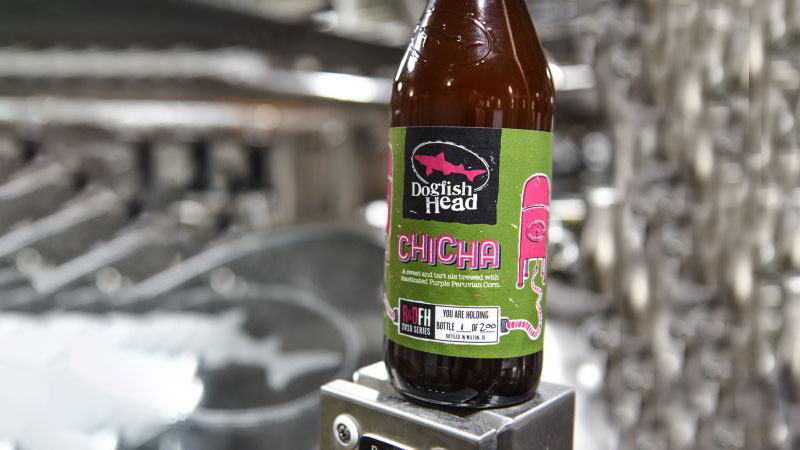 “Off-centered ales for off-centered people,” Dogfish Head’s company ethos, may sound trite in the upcoming decade. But in the ‘90s and through the 2010s, it was meaningful for many craft beer drinkers. Dogfish Head has stayed relevant through two and a half decades with its friendly attitude, constant flavor experimentation, and the crusading of charismatic frontman and founder, Sam Calagione. In 2016, Dogfish Head launched SeaQuench, it’s deliciously thirst-quenching tart ale that’s become the best-selling sour beer in the nation. And in 2017, Calagione was honored with a James Beard Award as the Outstanding Wine, Spirits or Beer Professional of the Year after seven consecutive nominations.
“Off-centered ales for off-centered people,” Dogfish Head’s company ethos, may sound trite in the upcoming decade. But in the ‘90s and through the 2010s, it was meaningful for many craft beer drinkers. Dogfish Head has stayed relevant through two and a half decades with its friendly attitude, constant flavor experimentation, and the crusading of charismatic frontman and founder, Sam Calagione. In 2016, Dogfish Head launched SeaQuench, it’s deliciously thirst-quenching tart ale that’s become the best-selling sour beer in the nation. And in 2017, Calagione was honored with a James Beard Award as the Outstanding Wine, Spirits or Beer Professional of the Year after seven consecutive nominations.
In one of the biggest beer news stories of the year (and perhaps even decade), Dogfish Head merged with Boston Beer Co. in 2019. This means more of the country will have access to the beers that we’ve enjoyed all these years.
Ballast Point
San Diego, Calif.
Est. 1996
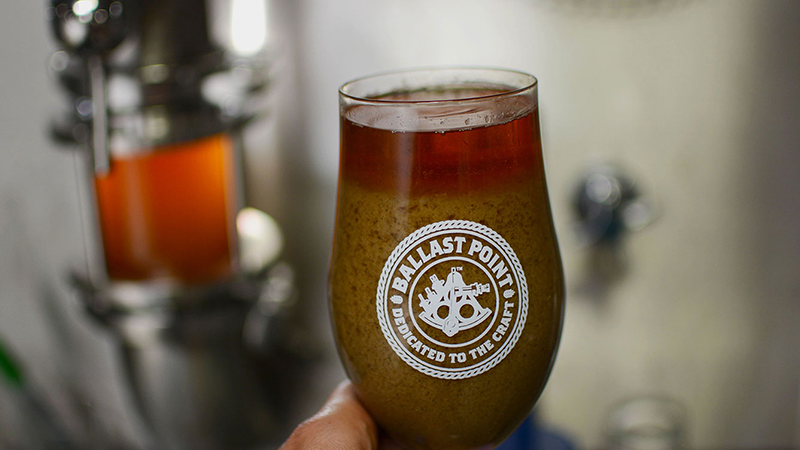 Ballast Point has had one of the biggest splashes in the craft beer world over the last decade. First, fans freaked out over Sculpin IPA (it tasted like grapefruit!); then were shocked even more by its series of fruit flavors (it’s made with grapefruit!?). Ballast Point continued to surprise us, selling to Constellation Brands for a jaw-dropping $1 billion in 2015. It even opened a location in Disneyland. Out of what seemed like nowhere, in November 2019, Ballast Point changed hands from Constellation to the virtually unknown Kings and Convicts Brewing Co. outside Chicago. Although Ballast Point’s future is hazy, (murky, even), we’ll never forget the effect this brand had on the decade.
Ballast Point has had one of the biggest splashes in the craft beer world over the last decade. First, fans freaked out over Sculpin IPA (it tasted like grapefruit!); then were shocked even more by its series of fruit flavors (it’s made with grapefruit!?). Ballast Point continued to surprise us, selling to Constellation Brands for a jaw-dropping $1 billion in 2015. It even opened a location in Disneyland. Out of what seemed like nowhere, in November 2019, Ballast Point changed hands from Constellation to the virtually unknown Kings and Convicts Brewing Co. outside Chicago. Although Ballast Point’s future is hazy, (murky, even), we’ll never forget the effect this brand had on the decade.
Firestone Walker Brewing Company
Paso Robles, Calif.
Est. 1996
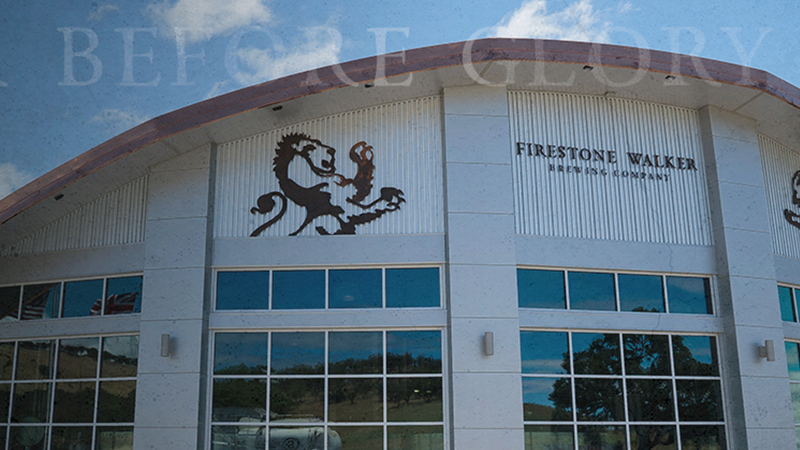 Firestone Walker started strong and saw success throughout the decade with its array of award-winning IPAs, such as its multiple-medaling Union Jack IPA. Meanwhile, it rocked out fruited sours and lagers, too. In 2015, Firestone Walker was acquired by Duvel, a stellar Belgian brewer, and the following year, Firestone Walker opened a pilot brewery and restaurant in Venice, Calif., and broke ground on another major brewhouse expansion in Paso Robles, completed in 2017. In 2019, Firestone Walker won our hearts with Rosalie, a rose-colored beer co-fermented with juice from local Paso Robles wine grapes and hibiscus — “the rosé lover’s beer,” brewmaster Matt Brynildson said. We’re excited to see what’s coming next.
Firestone Walker started strong and saw success throughout the decade with its array of award-winning IPAs, such as its multiple-medaling Union Jack IPA. Meanwhile, it rocked out fruited sours and lagers, too. In 2015, Firestone Walker was acquired by Duvel, a stellar Belgian brewer, and the following year, Firestone Walker opened a pilot brewery and restaurant in Venice, Calif., and broke ground on another major brewhouse expansion in Paso Robles, completed in 2017. In 2019, Firestone Walker won our hearts with Rosalie, a rose-colored beer co-fermented with juice from local Paso Robles wine grapes and hibiscus — “the rosé lover’s beer,” brewmaster Matt Brynildson said. We’re excited to see what’s coming next.
Stone Brewing
Escondido, Calif.
Est. 1996
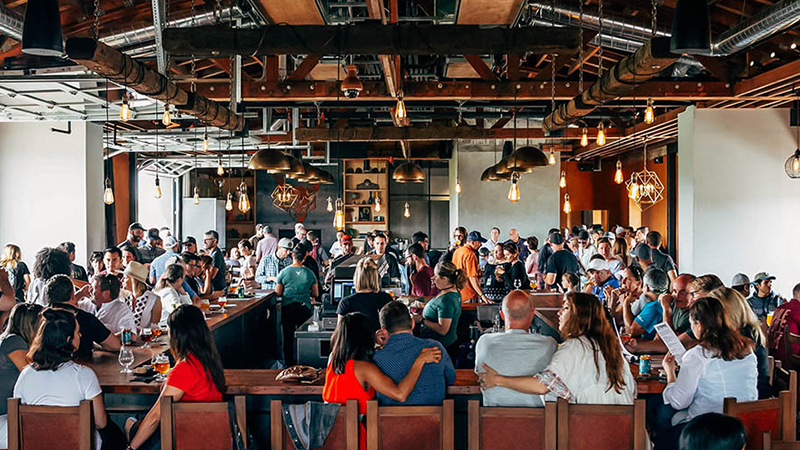 Arrogant by design, Stone Brewing based its business on in-your-face branding. As much as this can be irritating, there’s no denying Stone’s American-made success.
Arrogant by design, Stone Brewing based its business on in-your-face branding. As much as this can be irritating, there’s no denying Stone’s American-made success.
Three Floyds Brewing
Munster, Ind.
Est. 1996
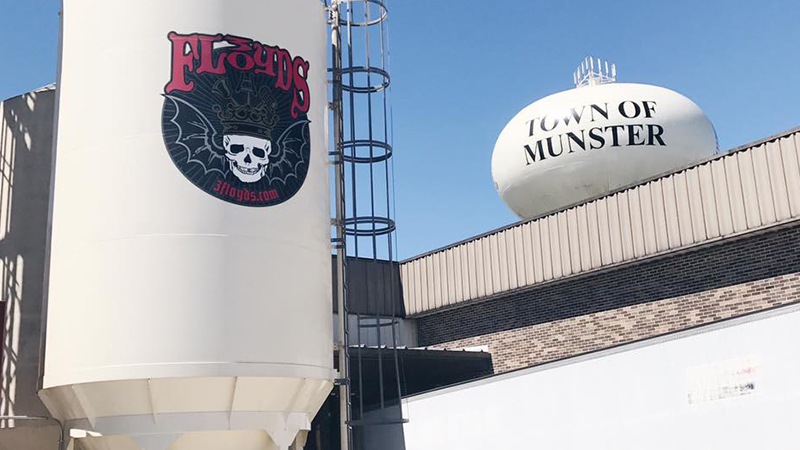 We can sum up Three Floyds in three words: Dark Lord Day. An unpretentious brewery in the unlikely town of Munster, Ind., brought together the craft beer and heavy metal worlds, while also introducing one of the first beer release day festivals for its Dark Lord “demonic Russian-Style Imperial Stout” — an event that has attracted up to 10,000 visitors in one day. Epitomizing extremes, Three Floyds is equally revered for its in-your-face Zombie Dust IPA.
We can sum up Three Floyds in three words: Dark Lord Day. An unpretentious brewery in the unlikely town of Munster, Ind., brought together the craft beer and heavy metal worlds, while also introducing one of the first beer release day festivals for its Dark Lord “demonic Russian-Style Imperial Stout” — an event that has attracted up to 10,000 visitors in one day. Epitomizing extremes, Three Floyds is equally revered for its in-your-face Zombie Dust IPA.
Victory Brewing Company
Downingtown, Pa.
Est. 1996
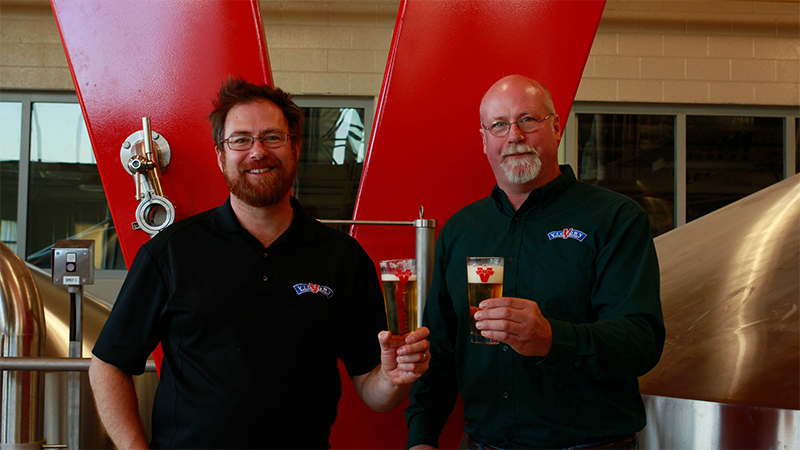 Golden Monkey. Hop Devil. Prima Pils! If you weren’t drinking these three brands in the 2010s, you weren’t drinking craft beer. Bill Covaleski and Ron Barchet opened Victory’s doors in 1996 to celebrate and recreate German and other European brewing traditions. They introduced much more than that. In 2014, Victory opened its production facility in Parkesburg, Pa., from where it continues to innovate, distributing its beers in 33 states across the U.S.
Golden Monkey. Hop Devil. Prima Pils! If you weren’t drinking these three brands in the 2010s, you weren’t drinking craft beer. Bill Covaleski and Ron Barchet opened Victory’s doors in 1996 to celebrate and recreate German and other European brewing traditions. They introduced much more than that. In 2014, Victory opened its production facility in Parkesburg, Pa., from where it continues to innovate, distributing its beers in 33 states across the U.S.
Russian River Brewing
Santa Rosa, Calif.
Est. 1997
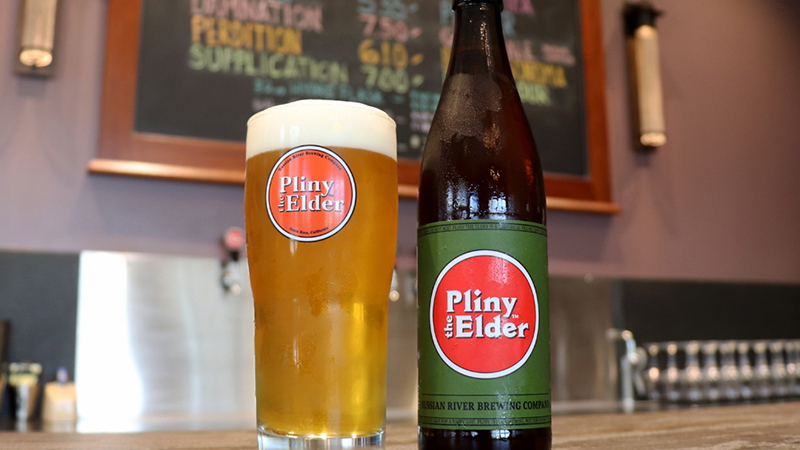 Rare as it may be to actually drink Russian River’s beer — you’ll be hard-pressed to find its famous Pliny the Elder, Pliny the Younger, or other brands outside the brewery locations — there’s no denying these beers have consistently been part of the craft beer conversation over the last decade and more. In 2018, Pliny the Younger’s release brought 12,500 visitors to Sonoma County, generating $3.4 million.
Rare as it may be to actually drink Russian River’s beer — you’ll be hard-pressed to find its famous Pliny the Elder, Pliny the Younger, or other brands outside the brewery locations — there’s no denying these beers have consistently been part of the craft beer conversation over the last decade and more. In 2018, Pliny the Younger’s release brought 12,500 visitors to Sonoma County, generating $3.4 million.
Russian River’s history has been told again and again, but the brand and its friendly-faced owners (husband-and-wife duo, Vinnie and Natalie Cilurzo) are still out there creating new beer experiences and helping the community in every way they can.
Founders Brewing
Grand Rapids, Mich.
Est. 1997
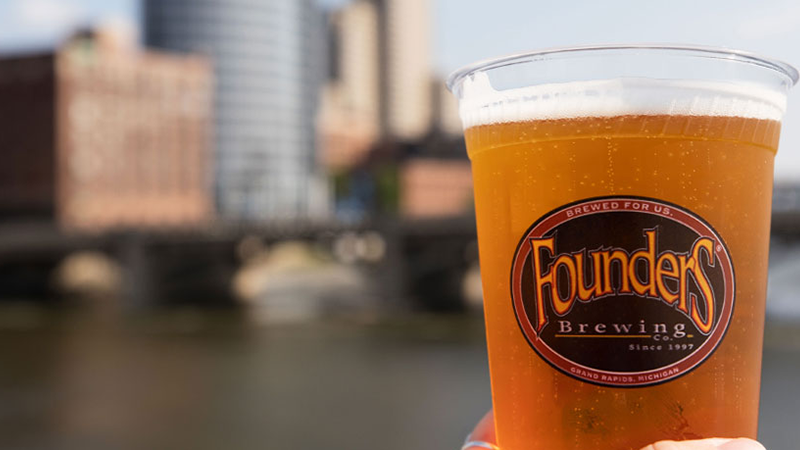 It’s impossible to ignore the influence Founders has had on the craft beer business. Sadly, this took a turn for the worse at the end of the decade, with the brewery’s recent racism issue and lawsuit outweighing our ability to support the brand. For more on this topic, read our coverage here.
It’s impossible to ignore the influence Founders has had on the craft beer business. Sadly, this took a turn for the worse at the end of the decade, with the brewery’s recent racism issue and lawsuit outweighing our ability to support the brand. For more on this topic, read our coverage here.
But before it made national news for its flawed business practices, Founders changed the way we drink beer. In 2011, it launched All Day IPA, effectively creating the session IPA category and influencing countless spin-offs and light-in-alcohol, full-flavored ales. This trend continues to surge today. In 2013, Founders introduced the 15-pack of All Day IPA, setting yet another trend in the industry.
Live Oak Brewing
Austin, Texas
Est. 1997
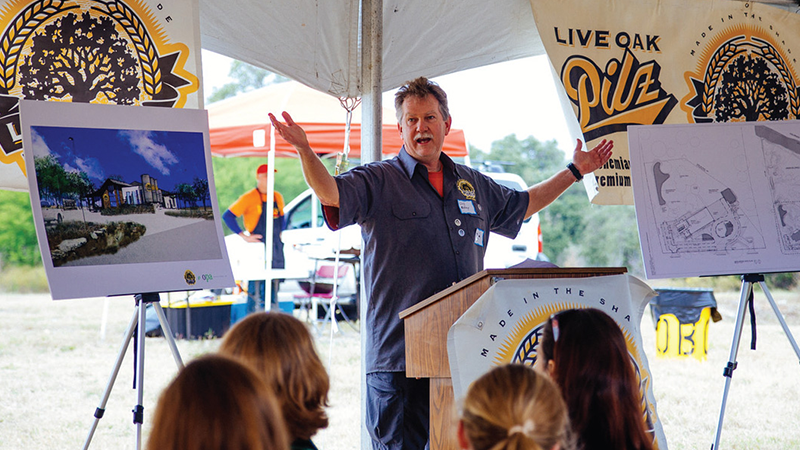 Austin is one of the best places in the country to drink lager. And though that’s largely due to its German and Czech immigrant history, in modern times it was Live Oak that led the pack of what’s now become one of the best cities for craft lager in the country.
Austin is one of the best places in the country to drink lager. And though that’s largely due to its German and Czech immigrant history, in modern times it was Live Oak that led the pack of what’s now become one of the best cities for craft lager in the country.
The Alchemist
Stowe, Vt.
Est. 2003
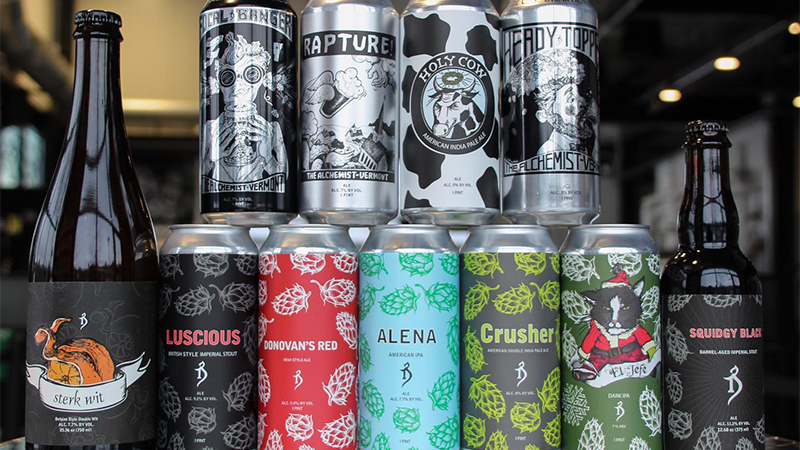 The Alchemist is not only one of the pivotal members of the beer industry, but of the entire drinks industry this decade. The family-owned brand launched in 2003 by John and Jen Kimmich introduced its legendary limited-release Heady Topper Double IPA in 2011. IPAs, and the industry, have never been the same.
The Alchemist is not only one of the pivotal members of the beer industry, but of the entire drinks industry this decade. The family-owned brand launched in 2003 by John and Jen Kimmich introduced its legendary limited-release Heady Topper Double IPA in 2011. IPAs, and the industry, have never been the same.
Toppling Goliath
Decorah, Iowa
Est. 2007
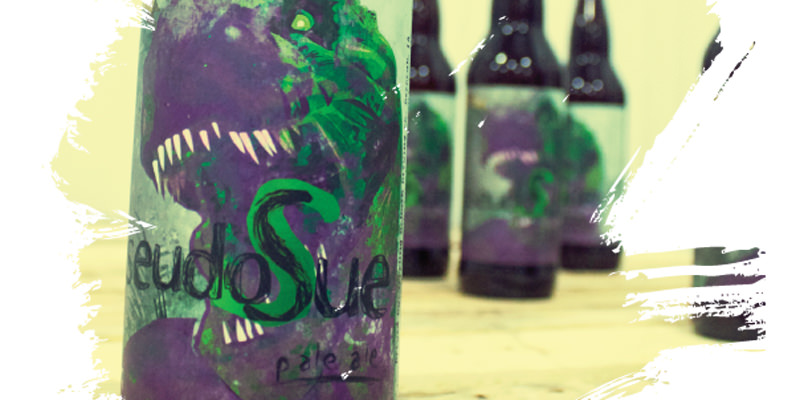 In 2015, VinePair named Toppling Goliath the best brewery in its state. In 2016, RateBeer (pre-ZX Ventures) ranked Toppling Goliath’s Pompeii IPA the top IPA in the state. And in 2019, VinePair ranked King Sue DIPA among the 25 most important IPAs right now. Clearly, this brewery tops beer nerds’ bucket lists again and again.
In 2015, VinePair named Toppling Goliath the best brewery in its state. In 2016, RateBeer (pre-ZX Ventures) ranked Toppling Goliath’s Pompeii IPA the top IPA in the state. And in 2019, VinePair ranked King Sue DIPA among the 25 most important IPAs right now. Clearly, this brewery tops beer nerds’ bucket lists again and again.
Cigar City Brewing
Tampa, Fla.
Est. 2007
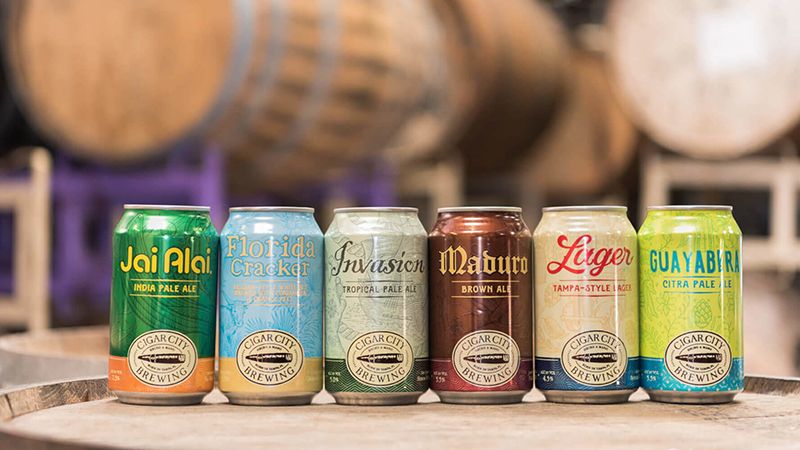 Cigar City was founded in 2007, started producing beer in Tampa in 2009, and sold to the CANarchy Craft Brewery Collective in 2016. One of the top 10 craft breweries in the country by volume, Cigar City was the fastest-growing top 50 brewery in 2018, according to the Brewers Association. Additionally, its Jai Alai IPA is one of the country’s top-selling beers; its Maduro Brown Ale won back-to-back gold medals at the Great American Beer Festival in 2018 and 2019; and its Hunahpu imperial stout has its own festival.
Cigar City was founded in 2007, started producing beer in Tampa in 2009, and sold to the CANarchy Craft Brewery Collective in 2016. One of the top 10 craft breweries in the country by volume, Cigar City was the fastest-growing top 50 brewery in 2018, according to the Brewers Association. Additionally, its Jai Alai IPA is one of the country’s top-selling beers; its Maduro Brown Ale won back-to-back gold medals at the Great American Beer Festival in 2018 and 2019; and its Hunahpu imperial stout has its own festival.
Cigar City started strong and has only gotten stronger. The tropical-themed brewery continues to release new brands we love: its Guayabera Pale Ale was our No. 2 beer of the year in 2019.
Revolution Brewing
Chicago, Ill.
Est. 2008
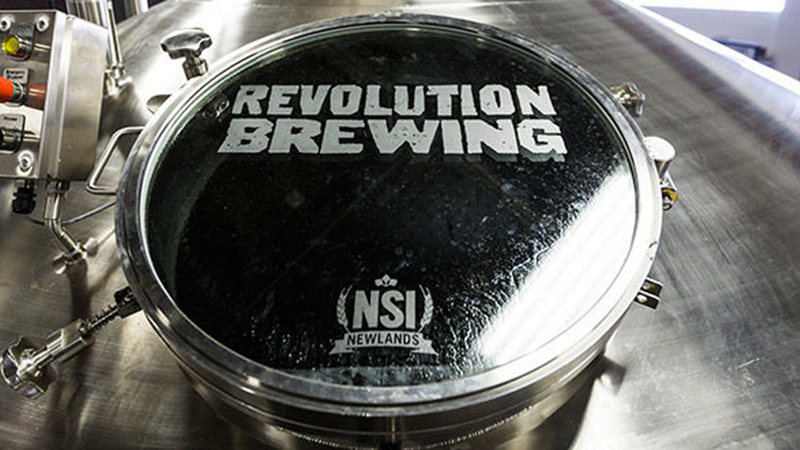 Chicago has lots of beloved breweries, but by far and away Revolution has had the biggest impact on the craft beer business there, serving as a blueprint for some of our other favorite brands. By the end of 2018, Revolution’s home of Chicago had more breweries than any other U.S. city. Along with being one of the first, it’s now the largest independent brewery in Illinois.
Chicago has lots of beloved breweries, but by far and away Revolution has had the biggest impact on the craft beer business there, serving as a blueprint for some of our other favorite brands. By the end of 2018, Revolution’s home of Chicago had more breweries than any other U.S. city. Along with being one of the first, it’s now the largest independent brewery in Illinois.
Maine Beer Co.
Freeport, Maine
Est. 2009
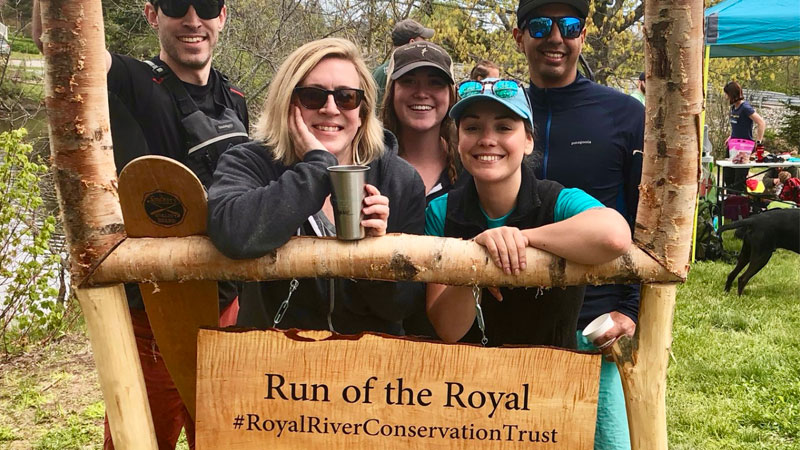
“Do what’s right.” Any East Coast beer nerd has seen and heard this phrase many times over — coming from Maine Beer Co., it never gets old. That’s because Maine Beer Co. has proven it’s not just a phrase, but the brewery’s truth. Opened at the cusp of the decade in 2009, Maine launched with one beer, Peeper, a pale ale brewed and bottled by hand. By 2013, the brewery relocated from its original Portland location to Freeport, Maine, where it now projects to surpass 20,000 barrels of beer in 2019.
Maine Beer Co. is committed to its employees and the environment. Learn more in our interview with Maine Beer Co. founder Dan Kleban here.
Jester King Brewery
Austin, Texas
Est. 2010
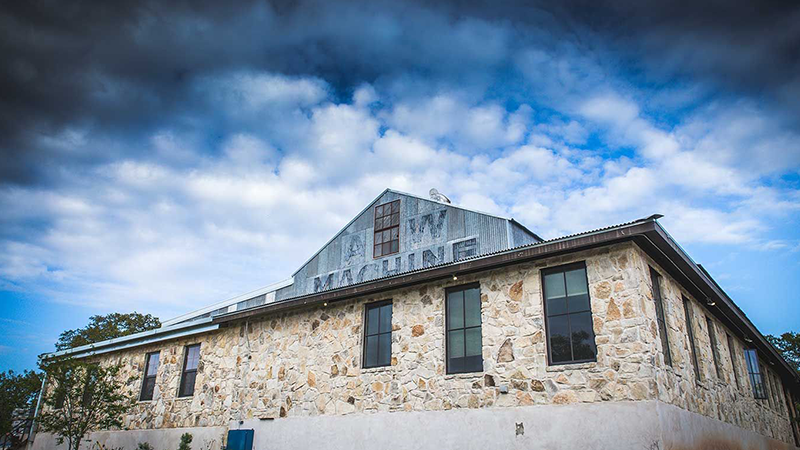 While Austin is pumping out some of the best lagers in the country from brewers like Live Oak and Austin Beer Garden Brewing Co. (the ABGB), what sticks out most in the city’s, and state’s, beer scene is the overwhelming charm of Jester King. Set on a 200-acre ranch outside Austin, it brings the term “farmhouse ales” to life with its stunning property, estate-grown and locally sourced ingredients, and commitment to mixed-fermentation and wild yeast. If you haven’t tasted one of Jester King’s oak-aged, spontaneously fermented and secondary-bottle-fermented beers, you haven’t lived your best beer-loving life.
While Austin is pumping out some of the best lagers in the country from brewers like Live Oak and Austin Beer Garden Brewing Co. (the ABGB), what sticks out most in the city’s, and state’s, beer scene is the overwhelming charm of Jester King. Set on a 200-acre ranch outside Austin, it brings the term “farmhouse ales” to life with its stunning property, estate-grown and locally sourced ingredients, and commitment to mixed-fermentation and wild yeast. If you haven’t tasted one of Jester King’s oak-aged, spontaneously fermented and secondary-bottle-fermented beers, you haven’t lived your best beer-loving life.
Hill Farmstead Brewery
Greensboro Bend, Vt.
Est. 2010
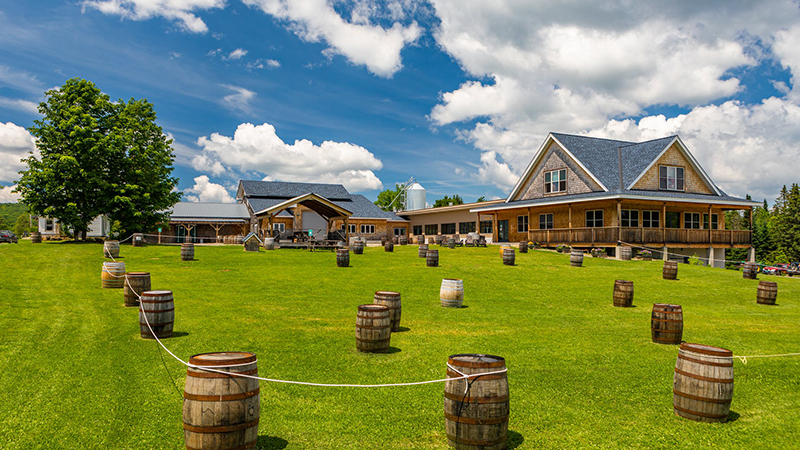 “Elusive” is an understatement when it comes to Hill Farmstead and its beers. The Vermont farmhouse brewery, one of the first and few actually located on a farm, became a household name among craft beer drinkers of this decade. Its delicate, perfectly balanced beers — Susan IPA, Edward Pale Ale, Everett Porter, all named after founder and brewer Shaun Hill’s family members — are stunning in their subtlety. Each is as pleasant an experience as it always has been every time we drink it.
“Elusive” is an understatement when it comes to Hill Farmstead and its beers. The Vermont farmhouse brewery, one of the first and few actually located on a farm, became a household name among craft beer drinkers of this decade. Its delicate, perfectly balanced beers — Susan IPA, Edward Pale Ale, Everett Porter, all named after founder and brewer Shaun Hill’s family members — are stunning in their subtlety. Each is as pleasant an experience as it always has been every time we drink it.
Westbrook Brewing
Mt. Pleasant, S.C.
Est. 2010
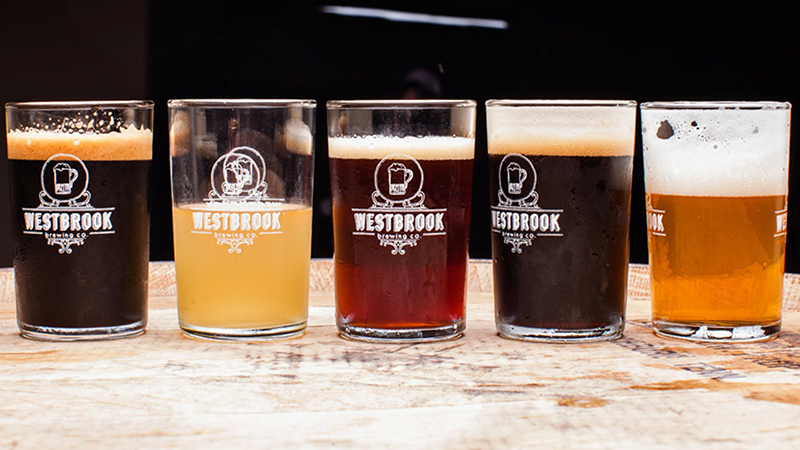 Opened nine years ago to the day (Dec. 20, 2010), this South Carolina brewery simultaneously delighted our senses with its Mexican Cake imperial stout — made with habaneros, cinnamon, vanilla, and cocoa nibs — and introduced the nearly extinct German gose to craft beer drinkers around the country. We tip our hats to Westbrook now and always.
Opened nine years ago to the day (Dec. 20, 2010), this South Carolina brewery simultaneously delighted our senses with its Mexican Cake imperial stout — made with habaneros, cinnamon, vanilla, and cocoa nibs — and introduced the nearly extinct German gose to craft beer drinkers around the country. We tip our hats to Westbrook now and always.
Tired Hands Brewery
Ardmore, Pa.
Est. 2011
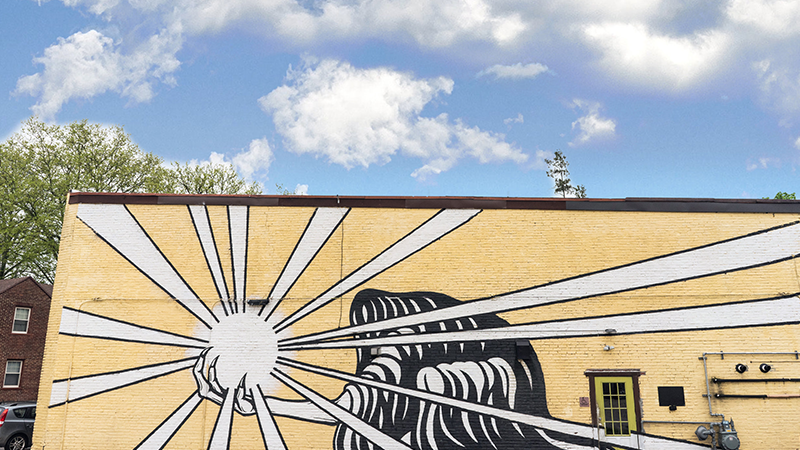 As VinePair reported last year, since opening its doors to its first brewery-cafe in 2012, Tired Hands has innovated IPA styles, invested in its local communities, and launched mid-Atlantic brewing careers. All this occurred while its beers remained extremely difficult to buy — unless you were willing to wait hours in line. In 2015, Tired Hands opened Fermentaria, a brewery and restaurant two blocks from its original location. The exponentially expanding brewery announced its first Philadelphia location in 2019.
As VinePair reported last year, since opening its doors to its first brewery-cafe in 2012, Tired Hands has innovated IPA styles, invested in its local communities, and launched mid-Atlantic brewing careers. All this occurred while its beers remained extremely difficult to buy — unless you were willing to wait hours in line. In 2015, Tired Hands opened Fermentaria, a brewery and restaurant two blocks from its original location. The exponentially expanding brewery announced its first Philadelphia location in 2019.
Tree House Brewing
Monson, Mass.
Est. 2011
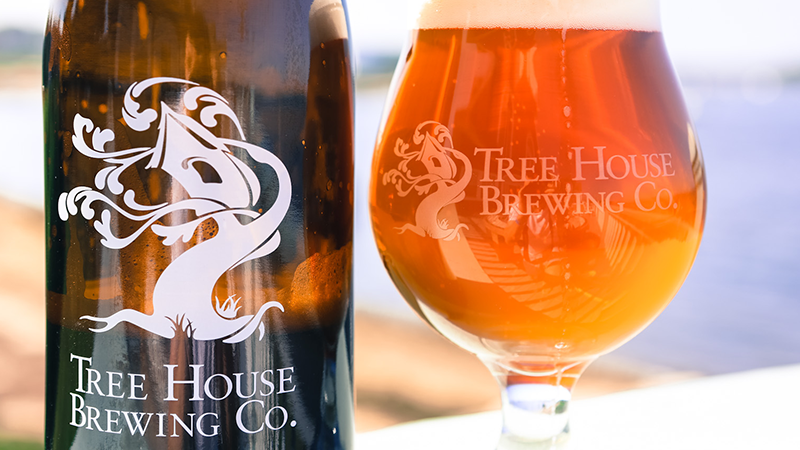 Juice smoothies and beer were rarely associated before Tree House Brewing released Julius. The NEIPA has a 100 percent rating on BeerAdvocate with nearly 5,000 votes, and is arguably unanimously understood to be the ultimate juicy and hazy IPA. Julius’s many iterations — along with those of companion brands Green and Haze — remain among the most sought-after beers in the nation.
Juice smoothies and beer were rarely associated before Tree House Brewing released Julius. The NEIPA has a 100 percent rating on BeerAdvocate with nearly 5,000 votes, and is arguably unanimously understood to be the ultimate juicy and hazy IPA. Julius’s many iterations — along with those of companion brands Green and Haze — remain among the most sought-after beers in the nation.
Prairie Artisan Ales
Krebs, Okla.
Est. 2012
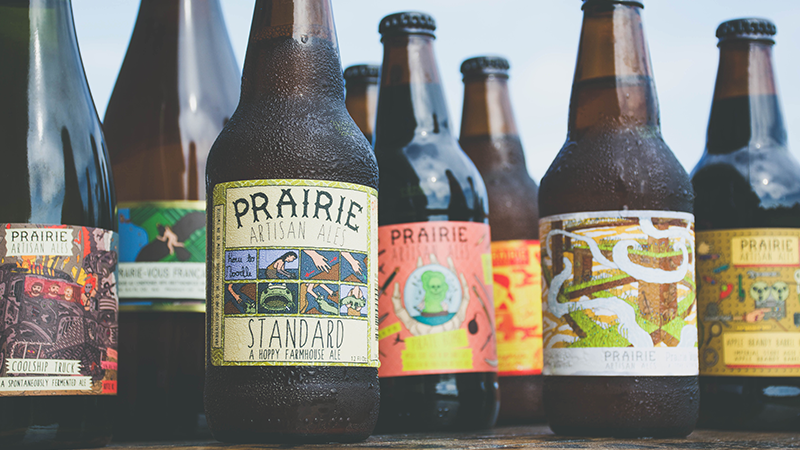 Prairie gave us pastry stouts. BOMB!, an explosion of flavor and excitement, enlightened our palates with baking-spiced decadence. Now there are hundreds, perhaps even thousands, of pastry stouts released on a regular basis in the U.S. How this tiny brewery became so famous for its tasty treats is a mystery we don’t need to solve.
Prairie gave us pastry stouts. BOMB!, an explosion of flavor and excitement, enlightened our palates with baking-spiced decadence. Now there are hundreds, perhaps even thousands, of pastry stouts released on a regular basis in the U.S. How this tiny brewery became so famous for its tasty treats is a mystery we don’t need to solve.
Wicked Weed Brewing
Asheville, N.C.
Est. 2012
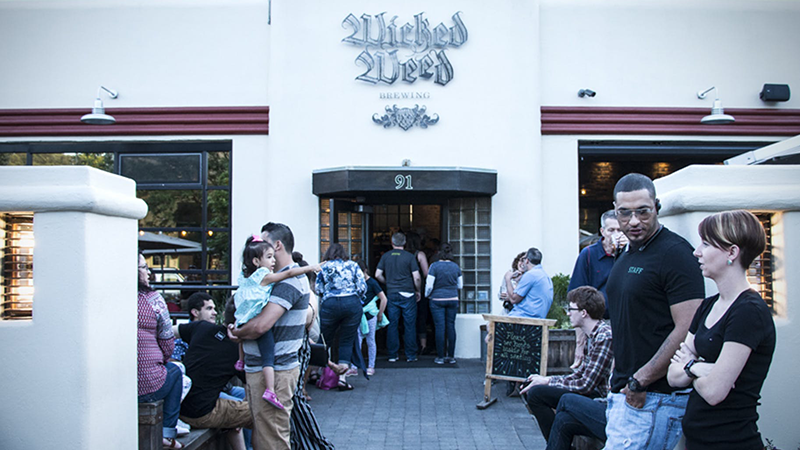 American wild ales weren’t common craft beer lexicon until breweries such as Wicked Weed devoted themselves to creating them. Although the brewery was bought by AB InBev just five years after it opened, and faced a heavy dose of backlash from die-hard fans, it’s still kicking.
American wild ales weren’t common craft beer lexicon until breweries such as Wicked Weed devoted themselves to creating them. Although the brewery was bought by AB InBev just five years after it opened, and faced a heavy dose of backlash from die-hard fans, it’s still kicking.
Modern Times Beer
San Diego, Calif.
Est. 2013
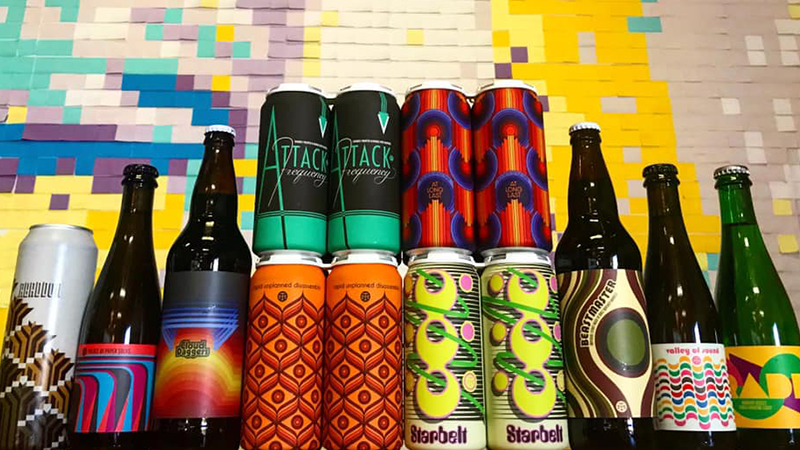 Modern Times Beer, a relative newcomer, made a name for itself with its West Coast (not West Coast-style) hazy IPAs. It was one of the first to bring hazies to the West Coast, but also excels in other styles, including one of our favorite (and under-hyped) beers, Blazing World, a hoppy amber ale. In a few short years, Modern Times grew from hype brewery to one of the top 50 craft brewing companies in 2018. The San Diego-based brand now has locations in Point Loma, North Park, Los Angeles, and Encinitas, Calif., and Portland, Ore.
Modern Times Beer, a relative newcomer, made a name for itself with its West Coast (not West Coast-style) hazy IPAs. It was one of the first to bring hazies to the West Coast, but also excels in other styles, including one of our favorite (and under-hyped) beers, Blazing World, a hoppy amber ale. In a few short years, Modern Times grew from hype brewery to one of the top 50 craft brewing companies in 2018. The San Diego-based brand now has locations in Point Loma, North Park, Los Angeles, and Encinitas, Calif., and Portland, Ore.
Trillium Brewing Company
Boston, Mass.
Est. 2013
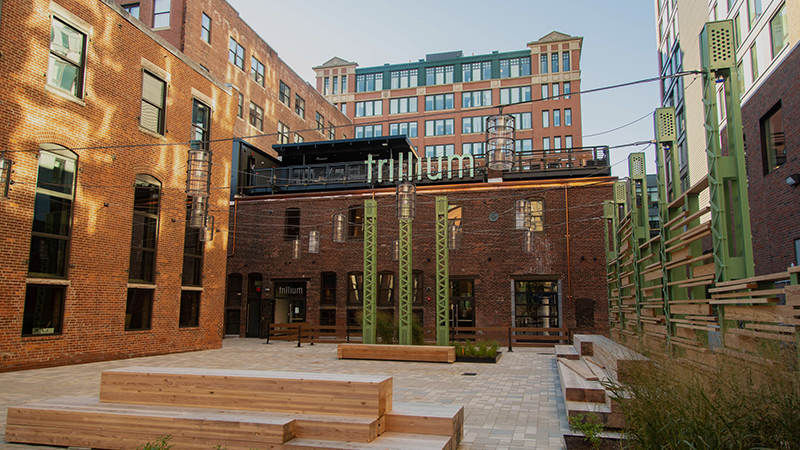 Where would the beer world be without Trillium? This ultra-collectable brand launched in 2013. By 2016, citizen beer reviewers ranked it one of the top 10 breweries in the world. And one could only procure its juicy brews in Massachusetts. Trillium is perhaps one of the biggest Boston beer success story since, well, Boston Beer. Synonymous with NEIPA, the brewery ranked among our 25 Most Important IPAs Right Now, and in our 50 Best Beers of 2019.
Where would the beer world be without Trillium? This ultra-collectable brand launched in 2013. By 2016, citizen beer reviewers ranked it one of the top 10 breweries in the world. And one could only procure its juicy brews in Massachusetts. Trillium is perhaps one of the biggest Boston beer success story since, well, Boston Beer. Synonymous with NEIPA, the brewery ranked among our 25 Most Important IPAs Right Now, and in our 50 Best Beers of 2019.
Grimm Artisanal Ales
Brooklyn, N.Y.
Est. 2013
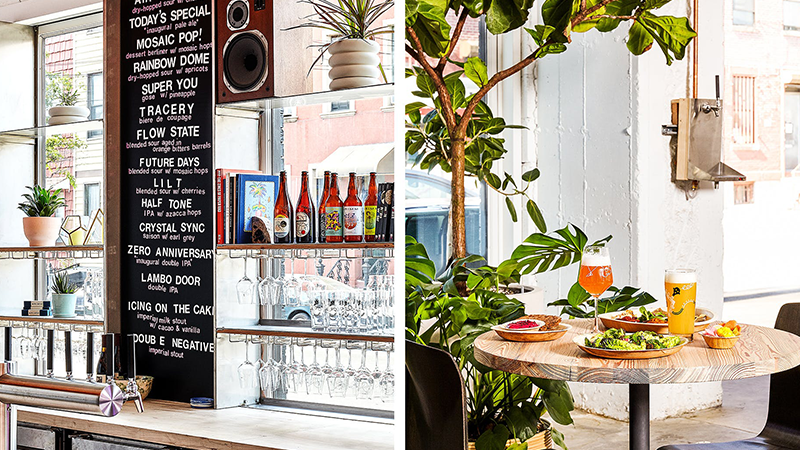 Gypsy brewers Joe and Lauren Grimm officially started selling beer in July 2013. Although they wouldn’t open a bona fide brewery until five years later, the brewers and brand have been deeply ingrained in the NYC beer community. The savvy artisans put packaging on a pedestal, but made sure it was the inside that counts, releasing a constant, if limited supply of excellent IPAs and sour beers. It’s a strategy that has since been mimicked by many.
Gypsy brewers Joe and Lauren Grimm officially started selling beer in July 2013. Although they wouldn’t open a bona fide brewery until five years later, the brewers and brand have been deeply ingrained in the NYC beer community. The savvy artisans put packaging on a pedestal, but made sure it was the inside that counts, releasing a constant, if limited supply of excellent IPAs and sour beers. It’s a strategy that has since been mimicked by many.
Other Half Brewing
Brooklyn, N.Y.
Est. 2014
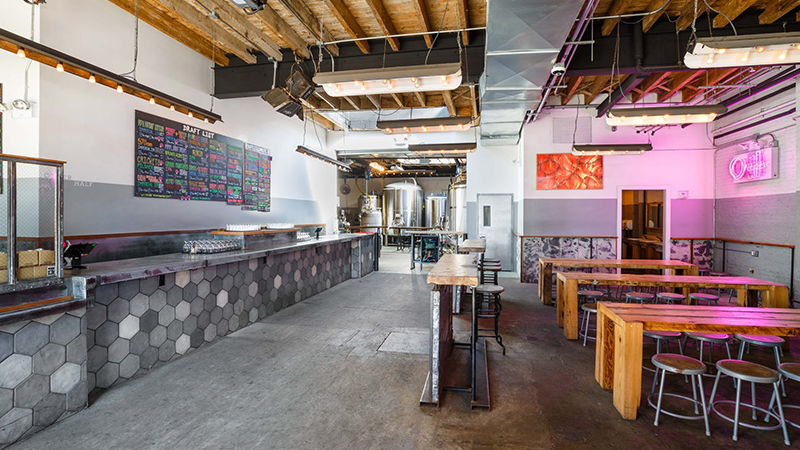 We’ll never forget our first sips of Other Half IPA, an aromatic hop bomb that wasn’t too bitter. What stood out to us at small beer events five years ago (has it really only been five years?) eventually earned the attention of DDH DIPA cognoscenti at large, especially as Other Half collaborated with brand after brand around the country and world.
We’ll never forget our first sips of Other Half IPA, an aromatic hop bomb that wasn’t too bitter. What stood out to us at small beer events five years ago (has it really only been five years?) eventually earned the attention of DDH DIPA cognoscenti at large, especially as Other Half collaborated with brand after brand around the country and world.
In a few short years, Other Half has gutted and renovated its Brooklyn location, opened a second location near one of New York’s up-and-coming beer cities, Rochester, and whispered plans to launch locations in Williamsburg, Brooklyn as well as Washington, D.C.
Other Half, can culture, and boss pours will be forever linked. The niche brewery’s unprecedented success has been an inspiration to brewers across the country and a point of pride for NYC beer drinkers.
Creature Comforts Brewing Co.
Athens, Ga.
Est. 2014
When beer lovers hear “Athens,” it’s likely they think of Creature Comforts and its popular Tropicalia juicy IPA. Yet the brand does more than brew delicious beers inspired by Brazilian arts movements. Between 2016 and 2017, its Get Comfortable campaign, a fundraising effort benefiting Athens-area nonprofits, generated more than $121,000. In 2018, Creature Comforts launched Get Artistic, a nonprofit community outreach program. And from its 2,000 barrels of beer production in 2014, it’s grown to a capacity of 50,000 barrels in 2018.
WeldWerks Brewing
Greeley, Colo.
Est. 2015
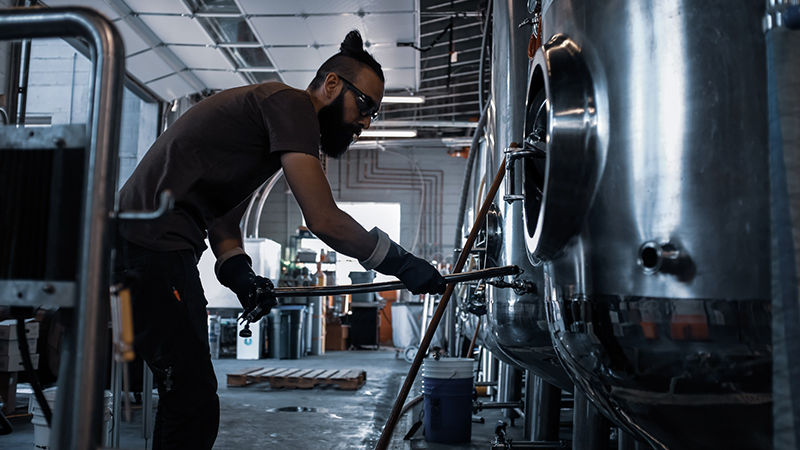 WeldWerks put Greeley, Colo., on the map with its juicy IPAs in 2015. It’s also a bastion of experimentation, whetting an appetite we didn’t know we had for things like pastry sours. With this, WeldWerks earned a spot on our 50 best beers of 2019. Some call it sacrilege, but we call it liquid entertainment. WeldWerks knows how to execute excellent brews, and they know how to have fun, too. What better way to finish out this ridiculous decade than with a peanut-butter-and-jelly-flavored Berliner weiss?
WeldWerks put Greeley, Colo., on the map with its juicy IPAs in 2015. It’s also a bastion of experimentation, whetting an appetite we didn’t know we had for things like pastry sours. With this, WeldWerks earned a spot on our 50 best beers of 2019. Some call it sacrilege, but we call it liquid entertainment. WeldWerks knows how to execute excellent brews, and they know how to have fun, too. What better way to finish out this ridiculous decade than with a peanut-butter-and-jelly-flavored Berliner weiss?
This story is a part of VP Pro, our free platform and newsletter for drinks industry professionals, covering wine, beer, liquor, and beyond. Sign up for VP Pro now!
